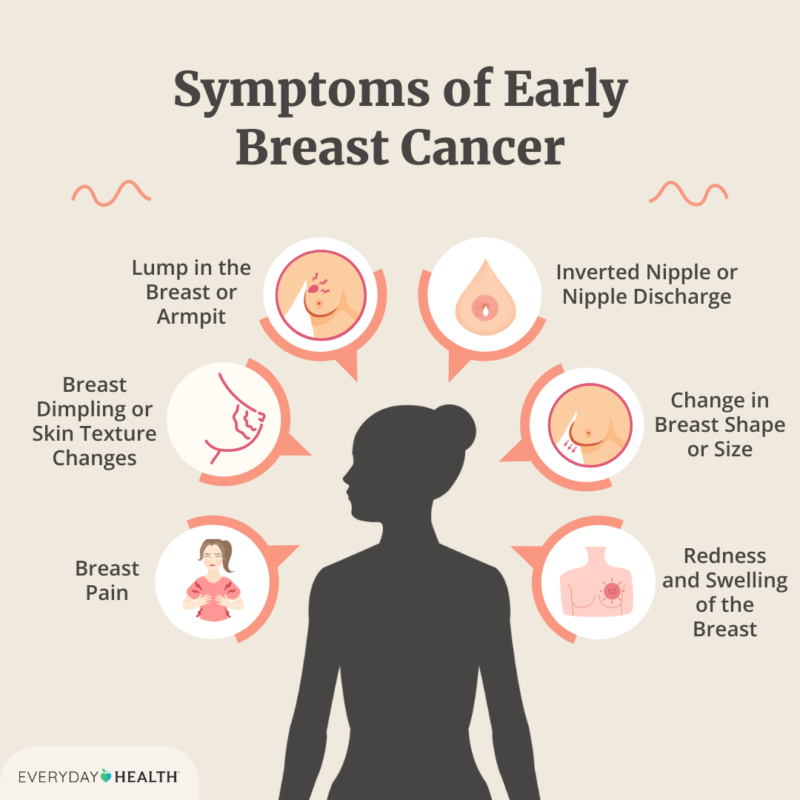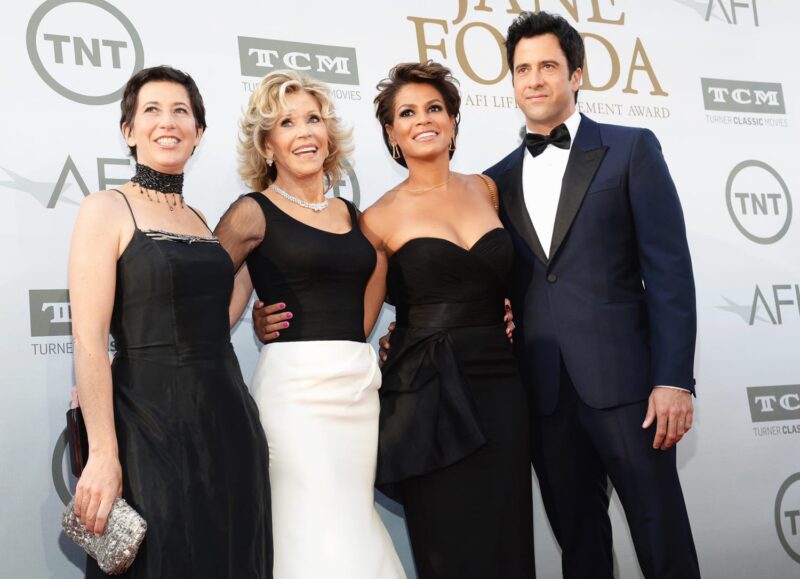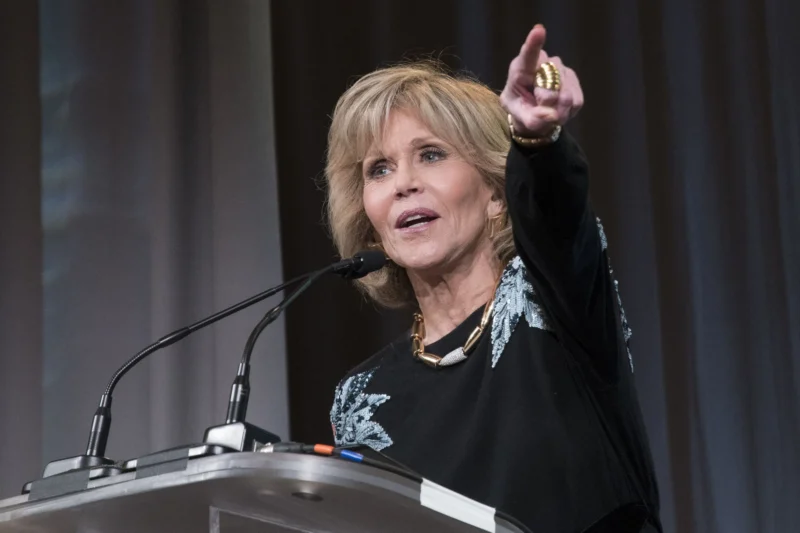
Jane Fonda Breast Cancer and Non-Hodgkin Lymphoma: How She Went Against, How She Survived, and More
Jane Fonda is a celebrated actress and activist known for her impactful career and commitment to social justice. She has won two Academy Awards and has been a powerful voice for women’s rights and environmental issues. Fonda’s personal battles with breast cancer in 2010 and non-Hodgkin lymphoma in 2022 highlight critical health challenges; breast cancer affects 1 in 8 women, with nearly 264,000 new cases annually, while non-Hodgkin lymphoma sees about 81,560 new cases each year. Her journey emphasizes the importance of awareness, early detection, and support in the fight against cancer.
How Did Jane Fonda Get Diagnosed with Breast Cancer?
Jane Fonda’s breast cancer diagnosis in 2010 was discovered during a routine mammogram, a vital tool in early detection. Following the screening, her doctor recommended a biopsy, which confirmed the presence of cancer. Fonda described the emotional impact of the diagnosis as profound, feeling a mix of fear and vulnerability, yet she also emphasized a sense of empowerment in facing her health challenge head-on.

Her experience highlights the critical importance of regular screenings, as early detection significantly increases treatment success rates. For instance, the five-year survival rate for localized breast cancer is nearly 99% when caught early.
Symptoms
Before her breast cancer diagnosis in 2010, Jane Fonda experienced no noticeable symptoms; her cancer was found during a routine mammogram. This illustrates how many breast cancer cases can be asymptomatic, emphasizing the need for regular screenings. According to the American Cancer Society, about 1 in 8 women will develop breast cancer, with early detection significantly improving outcomes—99% for localized cases (ACS, 2023).
Common symptoms of breast cancer include:
- A lump in the breast or underarm
- Changes in breast shape or size
- Skin changes, like dimpling
- Nipple discharge
For non-Hodgkin lymphoma, symptoms can include:
- Swollen lymph nodes
- Fever
- Night sweats
- Unexplained weight loss
Non-Hodgkin lymphoma affects approximately 81,560 people annually in the U.S. (NCI, 2023). Fonda’s journey underscores the importance of awareness and early detection for both cancers, as timely intervention can lead to better outcomes.

What Were Jane Fonda’s Initial Reactions to Her Diagnosis?
Jane Fonda’s initial emotional response to her breast cancer diagnosis in 2010 was a mix of fear and vulnerability. She expressed feeling “devastated” but also found a sense of empowerment in confronting her health challenges. In a 2018 interview, she reflected.
“I knew I had to take care of myself. I had to be my own advocate.”
When diagnosed with non-Hodgkin lymphoma in 2022, Fonda acknowledged her mortality more openly, stating, “I’m not afraid of dying, but I am afraid of the process.” This admission reveals her acceptance of life’s impermanence while emphasizing the importance of living fully.
To mentally prepare for her journeys, Fonda focused on maintaining a positive mindset and leaning on her support network. She emphasized the importance of community, saying,
“I have my family, my friends, and my work; they keep me grounded.”
Her resilience and proactive approach illustrate how she navigated these significant health challenges, inspiring many to prioritize their health and well-being
What was the Prognosis?
At the time of her breast cancer diagnosis in 2010, Jane Fonda received a favorable prognosis due to early detection via a routine mammogram. With localized breast cancer, the five-year survival rate is nearly 99% (American Cancer Society, 2023). She underwent a lumpectomy and radiation therapy, viewing the experience as empowering.
In contrast, her 2022 diagnosis of non-Hodgkin lymphoma presented a more uncertain prognosis, with an overall five-year survival rate of about 72% (National Cancer Institute, 2023). Fonda emphasized adaptability, stating,
“You have to adapt your thinking and find joy in the little things.”
These prognoses shaped her treatment decisions and outlook on life, reinforcing her belief in the importance of a positive mental attitude. Her resilience inspires many, highlighting the significance of early detection and proactive health management.
What Treatment Did Jane Fonda Undergo?
Jane Fonda received different treatments for her breast cancer and non-Hodgkin lymphoma. For her breast cancer diagnosis in 2010, she underwent a lumpectomy followed by radiation therapy. These treatments were chosen due to the early detection of her cancer, allowing for a less invasive approach. The expected outcome for localized breast cancer is highly favorable, contributing to her ability to return to her career relatively quickly.
In 2022, Fonda was diagnosed with non-Hodgkin lymphoma, for which she began chemotherapy. This treatment choice was necessary due to the more aggressive nature of the lymphoma, with outcomes varying based on the specific subtype. Chemotherapy can be physically taxing, impacting her energy levels and daily routines.
Throughout both treatments, Fonda maintained a strong commitment to her health and advocacy work, often emphasizing the importance of a positive mindset. Despite the challenges, she managed to balance her recovery with her career, using her experiences to inspire others facing similar battles.
Surgery
Jane Fonda underwent a lumpectomy for her breast cancer in 2010, chosen for its effectiveness in early-stage detection and its less invasive nature. This option allowed for quicker recovery, typically within a few weeks, though potential complications include infection and changes in breast shape.
During her recovery, Fonda focused on self-care, practicing yoga and meditation, and expressing gratitude for her support network.
In 2022, she was diagnosed with non-Hodgkin lymphoma but did not require surgery, opting for chemotherapy instead. Her resilience during both health challenges highlights her commitment to wellness and serves as an inspiration through her advocacy and openness about her experiences.
Chemotherapy and Radiation
For her breast cancer in 2010, Jane Fonda underwent radiation therapy after her lumpectomy, which aimed to eliminate remaining cancer cells. This treatment typically involves daily sessions over several weeks and can cause fatigue and skin irritation. Fonda managed these side effects by prioritizing self-care and relying on her support network.
In 2022, she received chemotherapy for non-Hodgkin lymphoma, which can lead to fatigue, nausea, and weakened immunity. Fonda described the experience as a journey, stating. “You have to take it one day at a time.” She coped by engaging in joyful activities and practicing mindfulness.
Through both treatments, Fonda highlighted resilience and the importance of mental health, inspiring many with her openness about the challenges of cancer treatment.
How Did Jane Fonda Overcome the Challenges of Cancer?
During her treatment and recovery from breast cancer and non-Hodgkin lymphoma, Jane Fonda faced significant mental, emotional, and physical challenges. The uncertainty of her diagnoses and the side effects of treatments like radiation and chemotherapy took a toll on her well-being.Fonda’s resilience shone through as she prioritized self-care and maintained a positive mindset. She often spoke about the importance of taking things “one day at a time,” which helped her navigate the emotional rollercoaster of her journey. Her family and friends played a crucial role in providing support, offering encouragement and companionship during difficult moments.
To cope with the physical and emotional toll, Fonda engaged in practices like yoga, meditation, and mindfulness, which helped her manage stress and stay grounded. She also expressed gratitude for her support network, recognizing how essential it was in fostering her strength. Fonda’s journey illustrates her commitment to resilience and the power of community in overcoming health challenges.

Support from Family, Friends, and Community
During her treatment for both breast cancer and non-Hodgkin lymphoma, Jane Fonda relied on a strong support system that included her family and close friends. Her daughter, Vanessa Vadim, and fellow actors provided emotional support, helping her navigate the challenges of her diagnoses.
Fonda often expressed gratitude for her family’s unwavering presence, which included attending appointments and offering encouragement. She also received public support from fans and the broader community, using her platform to raise awareness about cancer and inspire others.

This network was crucial to Fonda’s resilience, highlighting the importance of connection and solidarity in facing health challenges. Her journey underscores how a robust support system can significantly impact recovery and well-being.
Mental and Emotional Challenges
The psychological impact of cancer on Jane Fonda was profound, as she navigated the emotional challenges of both breast cancer and non-Hodgkin lymphoma. The fear of recurrence and anxiety associated with treatment were significant stressors, leading to feelings of vulnerability and moments of depression.
To cope, Fonda prioritized her mental health through mindfulness practices like yoga and meditation, which helped her manage stress. She also relied on her strong support system of family and friends for comfort and understanding.
While she hasn’t detailed seeking professional help, her advocacy for mental health highlights its importance. Fonda emphasizes self-compassion and resilience, inspiring others to confront their emotional struggles during cancer journeys and underscoring the vital link between physical and mental health.
How Did Advocacy and Public Awareness Help?
Jane Fonda has been instrumental in raising awareness about breast cancer and non-Hodgkin lymphoma, leveraging her platform to advocate for early detection and research. After her breast cancer diagnosis in 2010, she openly shared her journey, emphasizing the importance of regular screenings and self-examinations, which helped destigmatize cancer and encourage proactive health measures among women.
Following her 2022 diagnosis of non-Hodgkin lymphoma, Fonda continued to highlight the need for ongoing research and support. Her candid discussions about her experiences have fostered greater understanding of the emotional and physical challenges of cancer, promoting empathy within the community.Fonda’s advocacy has significantly influenced public perceptions of cancer, shifting the focus toward prevention, early detection, and the importance of mental health. Her resilience and openness inspire many, reinforcing the value of awareness and community support in the cancer journey.
Public Speaking and Advocacy
Jane Fonda has actively advocated for cancer awareness through public speaking and media appearances. After her breast cancer diagnosis in 2010, she used platforms like The Ellen DeGeneres Show to emphasize the importance of early detection and regular mammograms.
Following her 2022 diagnosis with non-Hodgkin lymphoma, Fonda continued her advocacy by participating in health forums and interviews, stressing the need for ongoing research and support for cancer patients. Her appearance on CBS This Morning highlighted her commitment to raising awareness.
Fonda’s influence as a public figure is significant; her openness helps demystify cancer and inspires others to prioritize their health. By promoting awareness and encouraging proactive behaviors, she plays a crucial role in advancing cancer research and supporting community resilience.
Collaborations with Health Organizations
Jane Fonda has partnered with several cancer research and advocacy organizations, including the American Cancer Society and Susan G. Komen for the Cure. She has participated in fundraising events like the Komen Race for the Cure, sharing her story to inspire support for breast cancer research.
Fonda has also been involved in initiatives during Breast Cancer Awareness Month, promoting the importance of early detection and screenings. Additionally, she supports organizations focused on mental health for cancer survivors, highlighting the emotional challenges of a diagnosis. Her advocacy raises awareness and encourages community involvement in the fight against cancer.
What Is Jane Fonda’s Life Like After Cancer?
After her cancer treatments, Jane Fonda has focused on maintaining her health through regular exercise, healthy eating, and mindfulness practices like yoga. As a survivor of both breast cancer and non-Hodgkin lymphoma, she faces ongoing challenges, including fear of recurrence and emotional stress, but emphasizes the importance of self-care and her support network.
Her experiences have profoundly shaped her outlook on life and work, driving her passion for advocacy. Fonda uses her platform to raise awareness and inspire others, stating that her journey has deepened her appreciation for life and motivated her to continue her activism and creative pursuits. Overall, her journey reflects resilience and a commitment to health and meaningful living.
Ongoing Advocacy and Activism
Jane Fonda remains a dedicated advocate for cancer awareness, actively participating in initiatives and public appearances focused on health and prevention. Recently, she has engaged in campaigns for Breast Cancer Awareness Month, using her platform to promote early detection and the importance of regular screenings.
Fonda has also participated in health forums and panel discussions, sharing her journey and encouraging open conversations about cancer, particularly for younger audiences. Her activism has evolved since her recovery; she now emphasizes not only prevention and early detection but also the emotional and psychological aspects of surviving cancer.
In addition to her public speaking, Fonda has continued to support organizations like the American Cancer Society and Susan G. Komen for the Cure, often participating in fundraising events and awareness campaigns. Her focus on mental health, alongside physical health, highlights a more holistic approach to cancer advocacy, reflecting her belief in the importance of community support and resilience. Overall, Fonda’s ongoing commitment to raising awareness has significantly contributed to public understanding and support for cancer-related issues.

Managing Long-term Health After Cancer
Jane Fonda takes several proactive steps to maintain her health after her cancer treatments. She prioritizes regular medical check-ups, including annual mammograms and screenings for non-Hodgkin lymphoma, ensuring early detection of any potential issues.
In terms of lifestyle changes, Fonda emphasizes a balanced diet rich in whole foods, fruits, and vegetables, along with regular physical activity. She practices yoga and engages in other fitness routines to support her physical and mental well-being.
Additionally, Fonda incorporates mindfulness and stress-reduction techniques, such as meditation, to manage anxiety and maintain a positive outlook. She also stays connected with her support network of family and friends, recognizing the importance of emotional health in her overall well-being.
Through these preventive measures and lifestyle choices, Fonda aims to reduce her risk of recurrence and promote long-term health, demonstrating a holistic approach to post-cancer living.
What Causes Breast Cancer and Non-Hodgkin Lymphoma?
Genetic Factors
While having a relative with cancer does not necessirily mean one has a genetic risk of cancer, certain conditions can increase ris of developing spesific cancers, including BRCA muattions for breast cancer and etc.
Breast Cancer
Genetics significantly influence breast cancer risk, with 15-20% of cases being hereditary, primarily linked to BRCA1 and BRCA2 mutations. Women with these mutations have up to a 70% lifetime risk of developing the disease (National Cancer Institute, 2023). A family history of breast cancer, particularly among first-degree relatives, can double the risk.
Genetic Testing: Testing for BRCA mutations helps individuals assess their risk and consider preventive measures, such as increased surveillance or prophylactic surgeries.
Non-Hodgkin Lymphoma (NHL)
Genetic factors in NHL are less defined, but certain hereditary syndromes can increase risk, albeit in a small percentage of cases. Family history can indicate higher risk, especially with multiple relatives diagnosed with lymphoma.
Key Mutations in Non-Hodgkin Lymphoma
- BCL2 Gene Rearrangements:
- Common in follicular lymphoma and certain diffuse large B-cell lymphomas (DLBCL). Promotes cell survival by inhibiting apoptosis.
- MYC Gene Rearrangements:
- Associated with Burkitt lymphoma and aggressive DLBCL. Drives uncontrolled cell proliferation.
- CD79B and MYD88 Mutations:
- Found in activated B-cell-like DLBCL. Lead to persistent survival signaling in B cells.
- TP53 Mutations:
- Present in various aggressive lymphomas. Compromise tumor suppression and increase genomic instability.
- KMT2D Mutations:
- Seen in follicular lymphoma. Disrupt normal gene expression and chromatin remodeling.
- EZH2 Mutations:
- Associated with follicular lymphoma and DLBCL. Affect epigenetic regulation and gene expression.
- NOTCH1 and NOTCH2 Mutations:
- Found in mantle cell lymphoma. Activate pathways involved in cell proliferation and differentiation.
Lifestyle and Environmental Factors
Breast Cancer
Lifestyle Choices:
- Diet: A diet high in fruits, vegetables, whole grains, and healthy fats may reduce breast cancer risk, while a diet high in saturated fats and processed foods can increase it. Studies suggest that maintaining a healthy weight is crucial, as obesity, particularly after menopause, raises risk.
- Exercise: Regular physical activity is associated with a lower risk of breast cancer. Aim for at least 150 minutes of moderate exercise per week.
- Alcohol Consumption: Even moderate alcohol intake can increase breast cancer risk. Women consuming more than one drink per day may face a 20% higher risk.
Environmental Factors:
- Exposure to Carcinogens: Prolonged exposure to certain chemicals (e.g., benzene, formaldehyde) and radiation can increase breast cancer risk. Occupational exposure in certain industries also plays a role.
Non-Hodgkin Lymphoma (NHL)
Lifestyle Choices:
- Weakened Immune System: Lifestyle factors that compromise immune function, such as smoking and poor diet, can increase NHL risk. A healthy diet and regular exercise support immune health.
- Infections: Certain viral infections (e.g., Epstein-Barr virus) are associated with NHL. Maintaining a strong immune system may help reduce this risk.
Environmental Factors:
- Exposure to Pesticides and Herbicides: Agricultural workers exposed to these chemicals have a higher risk of developing NHL.
How Can Breast Cancer and Non-Hodgkin Lymphoma Be Prevented?
Cancer remains one of the leading health challenges worldwide, with breast cancer and non-Hodgkin lymphoma (NHL) among the most prevalent types. Preventive measures, including regular screenings, lifestyle changes, and dietary adjustments, play a critical role in reducing the risk of these cancers.
Regular Screenings
Breast Cancer Screenings
- Mammograms:
- Importance: These X-ray images can detect tumors before they are palpable, leading to higher survival rates.
- Recommendations: The American Cancer Society advises annual mammograms starting at age 40, with biennial screenings after age 54. Women with a family history may need to begin earlier.
- Clinical Breast Exams (CBE):
- Recommendations: Women should have a CBE every 1-3 years in their 20s and 30s, and annually from age 40.
- Self-Exams:
- Importance: Monthly self-exams help women notice changes in their breasts.
Non-Hodgkin Lymphoma Health Checks
- Regular Health Check-ups:
- Importance: While there are no specific screenings for NHL, regular check-ups are vital for those at higher risk.
- Recommendations: High-risk individuals should consult their healthcare providers for more frequent evaluations.
- Monitoring Symptoms:
- Importance: Awareness of symptoms like unexplained weight loss and swollen lymph nodes can prompt earlier evaluation.
Lifestyle Changes
Making healthy lifestyle choices can lower the risk of breast cancer and non-Hodgkin lymphoma (NHL). Here are key changes and tips:
1. Maintain a Healthy Weight
- Importance: Obesity raises the risk of breast cancer, especially after menopause (American Cancer Society).
- Tips:
- Use smaller plates for portion control.
- Keep healthy snacks on hand.
- Track your eating habits with a food diary.
2. Stay Active
- Importance: Regular physical activity supports weight management and overall health (National Institutes of Health).
- Tips:
- Aim for 150 minutes of moderate exercise weekly.
- Choose enjoyable activities, like dancing or hiking.
- Incorporate movement into daily routines (e.g., taking stairs).
3. Avoid Tobacco
- Importance: Tobacco use is linked to several cancers (World Health Organization).
- Tips:
- Join a quit-smoking program if needed.
- Avoid secondhand smoke environments.
4. Limit Alcohol Consumption
- Importance: Even moderate drinking can increase breast cancer risk (American Institute for Cancer Research).
- Tips:
- Limit to one drink per day for women.
- Try non-alcoholic alternatives.
Dietary Recommendations
A healthy diet can help reduce the risk of breast cancer and non-Hodgkin lymphoma (NHL). Here are key recommendations:
Foods to Eat More Of
- Fruits and Vegetables: Aim for a variety of colorful options daily, including leafy greens, berries, and cruciferous vegetables.
- Whole Grains: Choose whole grains like brown rice, quinoa, and oats for their fiber content.
- Healthy Fats: Incorporate sources like avocados, nuts, seeds, and olive oil, along with omega-3 fatty acids from fish.
- Legumes: Include beans, lentils, and peas for protein and fiber.
- Lean Proteins: Opt for chicken, turkey, fish, and plant-based proteins over red and processed meats.
Foods to Limit
- Processed Meats: Reduce intake of bacon, sausages, and deli meats linked to cancer risk.
- Sugary Snacks and Beverages: Cut back on sweets, sodas, and high-sugar items that contribute to obesity.
- Refined Carbohydrates: Avoid white bread and pastries that lack nutrients.
- High-Fat Dairy: Limit full-fat dairy products due to potential links to breast cancer.
- Alcohol: If consumed, limit to one drink per day for women.

Best actres 1979 Oscar
Jane Fonda Top Movies
- Klute (1971) – Fonda won an Academy Award for her role as a call girl who becomes involved in a murder investigation.
- Coming Home (1978) – She received another Oscar for her portrayal of a woman whose husband is away at war and who falls in love with a paraplegic veteran.
- The China Syndrome (1979) – Fonda stars as a television reporter covering a nuclear power plant incident, a film that raised awareness about nuclear safety.
- On Golden Pond (1981) – In this classic, she plays the daughter of an elderly couple, earning critical acclaim and showcasing family dynamics.
- Barbarella (1968) – A cult classic, Fonda plays a space adventurer in this sci-fi comedy, noted for its campy style and iconic fashion.
- Grace and Frankie (2015-2022) – While a TV series, this show is notable for its exploration of friendship and aging, co-starring Lily Tomlin.
Written by Aharon tsaturyan, MD
FAQ
Did Jane Fonda Overcome Breast Cancer?
Yes, Jane Fonda was treated for breast cancer in 2010. After undergoing a lumpectomy and radiation therapy, her doctors considered the treatment successful, and she has not reported any recurrence of the disease since.
Is Jane Fonda Cured of Non-Hodgkin Lymphoma?
Jane Fonda announced in 2022 that she had been diagnosed with non-Hodgkin lymphoma and was undergoing chemotherapy. As of now, Fonda has shared that the treatment is going well, but she hasn’t publicly confirmed if she’s considered cured, as lymphoma treatments can vary in outcomes, and remission may take time to assess.
Did Jane Fonda Have Any Symptoms Before Her Cancer Diagnoses?
Jane Fonda’s breast cancer in 2010 was found during a routine mammogram, with no reported symptoms. She has not shared specific symptoms leading to her non-Hodgkin lymphoma diagnosis, though typical symptoms of lymphoma include swollen lymph nodes and fatigue.
What Kind of Cancer Did Jane Fonda Have?
Jane Fonda has been diagnosed with two types of cancer. In 2010, she was treated for breast cancer, and in 2022, she was diagnosed with non-Hodgkin lymphoma, a cancer that affects the lymphatic system.
What Are the Chances of Recurrence for Jane Fonda’s Cancers?
For breast cancer, the chances of recurrence depend on factors like the stage at diagnosis and treatment success. Fonda’s early detection through mammography likely reduced her risk. Non-Hodgkin lymphoma can have varied recurrence rates depending on the subtype and treatment response.
Did Jane Fonda Need Surgery for Non-Hodgkin Lymphoma?
No, Jane Fonda did not undergo surgery for non-Hodgkin lymphoma. Instead, she began chemotherapy to treat the cancer, which is a common approach for this type of lymphoma.
Can Jane Fonda’s Cancer Return?
While there is always a risk of recurrence with cancer, Jane Fonda’s breast cancer was treated early, lowering the risk of it returning. For non-Hodgkin lymphoma, long-term remission is possible, but regular monitoring is necessary to ensure the cancer does not come back.
How Did Jane Fonda Handle Chemotherapy?
Jane Fonda underwent chemotherapy for her non-Hodgkin lymphoma diagnosis in 2022. She has shared that while it was physically challenging, she managed the treatment and stayed optimistic about her recovery.
Is Early Detection Important in Jane Fonda’s Cancer Cases?
Yes, early detection played a critical role in Jane Fonda’s breast cancer diagnosis. The cancer was found during a routine mammogram before it spread, allowing for less invasive treatment. This underscores the importance of regular screenings for cancer prevention.
Is Jane Fonda Currently Cancer-Free?
Jane Fonda has successfully completed treatment for breast cancer, with no reports of recurrence. As for non-Hodgkin lymphoma, she is still undergoing treatment as of her latest public updates, and it’s unclear if she is currently in remission or fully cancer-free.
-
Challenging the Status Quo in Colorectal Cancer 2024
December 6-8, 2024
-
ESMO 2024 Congress
September 13-17, 2024
-
ASCO Annual Meeting
May 30 - June 4, 2024
-
Yvonne Award 2024
May 31, 2024
-
OncoThon 2024, Online
Feb. 15, 2024
-
Global Summit on War & Cancer 2023, Online
Dec. 14-16, 2023
